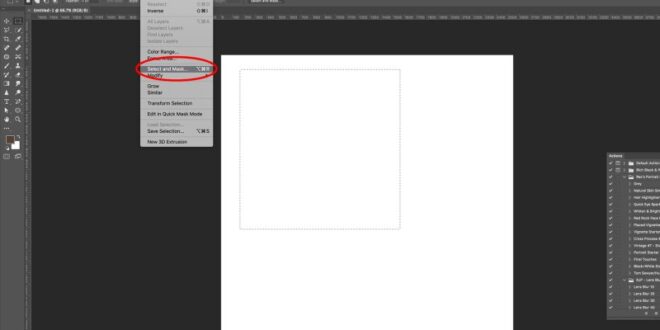Advanced Photoshop Layer Masking – Limited Access – Pro Plan New LUTS 3D Upcoming Limited Access – Pro Plan New LUTS 3D Upcoming Limited Access – Pro Plan New LUTS 3D Upcoming Limited Access – Pro Plan New LUTS 3D LUTS 3D Upcoming Limited Access Limited New LUTS 3D will be Unlimited Access – Pro Plan new LUTS 3D will be unlimited access – Pro plan New LUTS 3D will be unlimited access – Pro plan New LUTS 3D will be unlimited access – PRO plan New LUTS
Layer masks in Photoshop are an essential tool for improving your creativity and flexibility when working with images. They allow you to hide or reveal parts of an image or layer without permanently deleting any content. Using layer masks gives us the ability to make non-destructive edits and ensure that the original image remains intact as we apply and change changes.
Advanced Photoshop Layer Masking
The concept of layer masks is simple – they work by using the gray channel to control the visibility of specific areas of a layer. White reveals the content of the layer, black hides it, and gray gives different levels of visibility. With a solid understanding of layer masks, we can manipulate our images in a variety of ways, blending images and applying custom adjustments while maintaining the integrity of the original photo.
Use Masks To Hide Layers In Photoshop
Photoshop layer masks are powerful tools used for non-destructive editing. They allow you to add or hide certain parts of a layer without permanently changing the original image. We can also control the opacity and blending of different layers, creating a seamless visual effect.
When applying a layer mask, it’s important to note that the white color is revealed while the black is hidden. By painting the layer mask white or black, we can show or hide parts of the image. Additionally, different shades of gray can be used to create different levels of transparency.
Working with layer masks is very simple. First, select the layer you want to mask and click on it
Button in the Layers panel. This will create a white mask that allows you to see the entire layer. If you want to start with a darker layer mask, wait
Using Apply Image On Layer Masks In Photoshop
When using a layer mask, make sure the mask thumbnail is selected in the Layers panel. This will allow you to change the mask instead of the actual layer. When you apply a color to a mask, you’ll notice that the changes only affect the masked layer and protect all other layers in the project.
Note that layer masks allow us to control the visibility of specific parts of a layer. By understanding and mastering layer masks, we can create complex and professional images in our Photoshop projects.
When working with layer masks in Photoshop, we have a variety of tools at our disposal. Among the essential tools are the brush and eraser tools, which allow you to draw and edit masks directly on the selected layer.
To start, we can select the brush tool and select the appropriate brush size and hardness. The purpose of the brush tool is to paint a layer mask white or black, where white reveals parts of the layer and black hides them. The Hardness setting determines the sharpness of the edges of our brush strokes.
Photoshop Layer Masks: Refine Mask
An important aspect of layer mask editing is switching between black and white when painting. Use the X hotkey to do this smoothly. Note that white color reveals layer elements and black color hides them. With the Eraser tool, the concept remains the same – erasing in white reveals hidden layers, and erasing in black restores.
Finally, understanding and using these tools can greatly improve our layer mask editing experience in Photoshop. Mastering these techniques can help you do more accurate and efficient work on complex projects.
With layer masks in Photoshop, we have a variety of options to customize and manage our masks. An important aspect is the adjustment of the size of the mask. We can easily do this by selecting the mask and using the Transform Tool (Ctrl + T) to resize the layer without affecting its contents. For more information on resizing layer masks, check out this tutorial on Photoshop Layer Mask Basics for Beginners.
We can also control the background color of the mask. By default, it is white, which reveals all parts of the layer. Using a reveal mask on a white background allows you to control how much of the layer is visible. In contrast, hide full mask hides part of the layer using a black background. To switch between them, press D to reset the foreground and background colors and X to toggle them.
Tips For Using Layer Masks In Photoshop
Layer masks use grayscale values. Coloring in different shades of gray allows us to achieve different levels of opacity in our masks. Light brown, more visible layer; Dark brown, very hidden. It is necessary to combine images or create smooth transitions. To access the grayscale palette, press B on your keyboard to activate the brush tool and select the desired shade of gray in the swatches panel.
In conclusion, working with layer masks in Photoshop offers many opportunities to customize and improve your work. Adjusting the size, background color, overall exposure, grayscale, and foreground settings are just a few of the many ways we can manipulate and control our masks.
Photoshop offers a wide range of advanced techniques when it comes to layer masks. Layer masks provide design flexibility by allowing the designer to make adjustments without permanently changing the image. Let’s explore some of these methods.
Non-destructive editing is a significant advantage of using layer masks. By applying a mask to a layer, we can hide or reveal parts of an image without directly erasing or changing any pixels. This makes it easy to use different effects and adjustments without losing valuable information.
How To Create A Clipping Mask In Photoshop
Advanced technology pen. Feathers create smooth transitions between visible and hidden areas of the layer, making the end result look more natural. This can be adjusted using the Feather slider in the Properties panel, so we can refine the masks and ensure smooth blending of the layers.
Adjustments work hand in hand with layer masks because they give us the power to control the appearance of tones and colors in the masked area. Here are some examples of adjustment layers:
By adding one of these, we can target specific parts of our layer, increasing the overall masking effect of the layer.
Finally, we’d like to mention mask clipping, which is a Photoshop technique where the top layer is cut out of what’s visible on the bottom layer. It can be used in conjunction with layer masks to create interesting effects, such as limiting adjustments to a specific area or adding texture to certain parts of an image.
Adobe Photoshop 2023: Beg…b0bqhmd2sh
By mastering these advanced techniques, we can improve our Photoshop skills and create more complex and visually appealing designs. Don’t be afraid to experiment and unleash your creativity with layer masks!
Layer masks are incredibly useful Photoshop tools for photographers and designers. In this section, we’ll explore some use cases that demonstrate the power of layer masks in a variety of scenarios.
A practical use of layer masks is to create composite images. Imagine you’re working with two images: one with a beautiful sky and one with an interesting foreground. We can use a layer mask to seamlessly blend the two images together to create a stunning composition.
When working with photography, layer masks can be invaluable for selectively adjusting exposure or contrast. For example, we want to lighten the subject’s face without affecting the background. By adding a layer mask to an adjustment layer, we can apply adjustments to specific areas of the photo without touching the rest.
How To Mask In Photoshop: Guide For Beginners
In the world of advanced CGI and AI courses, layer masks also play an important role. They allow artists and designers to refine selections, mask complex objects, and perform complex selections for visual effects or 3D artwork. Layer masks allow you to make precise adjustments so that composite elements blend seamlessly with the rest of the image.
Even with software like Lightroom, it’s helpful to understand the concept of layer masks. Most Lightroom tweaks basically use the same principle of masking, applied in slightly different ways. This basic knowledge can help you move smoothly from tools to more complex results.
In conclusion, layer masks are essential tools for many creative applications, from photography to advanced video compositing and CGI. Their versatility and non-destructive nature ensures that they will continue to be used by professionals and hobbyists alike.
A layer mask is a non-destructive editing tool that allows you to hide or reveal parts of an image on a layer without permanently erasing it. This differs from normal layers, which allow you to draw and apply effects directly to the image.
Photoshop Astrophotography, Dso Processing Using Layer Masks Tutorial
Layer masks allow you to make non-destructive edits, giving you the flexibility to modify or adjust your changes later. It means you
 KopiKetan BLOG Adobe Photoshop is a powerful photo editing software that lets you create, retouch, and remix your photos.
KopiKetan BLOG Adobe Photoshop is a powerful photo editing software that lets you create, retouch, and remix your photos.



